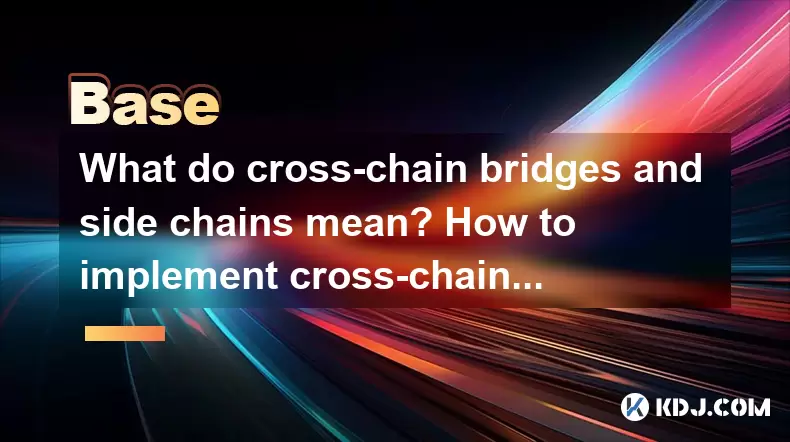-
 Bitcoin
Bitcoin $117500
2.04% -
 Ethereum
Ethereum $3759
3.02% -
 XRP
XRP $3.171
3.30% -
 Tether USDt
Tether USDt $1.000
0.03% -
 BNB
BNB $782.4
2.52% -
 Solana
Solana $187.2
5.62% -
 USDC
USDC $0.0000
0.02% -
 Dogecoin
Dogecoin $0.2380
5.26% -
 TRON
TRON $0.3175
1.07% -
 Cardano
Cardano $0.8227
4.03% -
 Hyperliquid
Hyperliquid $44.50
5.44% -
 Sui
Sui $4.020
10.07% -
 Stellar
Stellar $0.4396
6.28% -
 Chainlink
Chainlink $18.32
4.55% -
 Hedera
Hedera $0.2628
10.71% -
 Bitcoin Cash
Bitcoin Cash $554.8
4.90% -
 Avalanche
Avalanche $24.20
4.60% -
 Litecoin
Litecoin $113.7
2.31% -
 Shiba Inu
Shiba Inu $0.00001413
5.99% -
 UNUS SED LEO
UNUS SED LEO $8.984
0.11% -
 Toncoin
Toncoin $3.326
7.22% -
 Ethena USDe
Ethena USDe $1.001
0.00% -
 Uniswap
Uniswap $10.49
4.56% -
 Polkadot
Polkadot $4.092
4.02% -
 Monero
Monero $326.6
1.30% -
 Dai
Dai $1.000
-0.01% -
 Bitget Token
Bitget Token $4.570
2.49% -
 Pepe
Pepe $0.00001267
5.10% -
 Aave
Aave $297.3
3.10% -
 Cronos
Cronos $0.1344
4.10%
What do cross-chain bridges and side chains mean? How to implement cross-chain technology
Cross-chain bridges and side chains enhance blockchain interoperability and scalability, allowing asset transfers between networks like Bitcoin and Ethereum.
May 29, 2025 at 01:21 pm

Cross-chain bridges and side chains are pivotal technologies within the cryptocurrency ecosystem, designed to enhance interoperability and scalability across different blockchain networks. In this article, we will delve into the definitions and functionalities of cross-chain bridges and side chains, and explore how to implement cross-chain technology.
What Are Cross-Chain Bridges?
Cross-chain bridges are mechanisms that facilitate the transfer of assets and data between different blockchain networks. They play a crucial role in enabling interoperability, which is essential for the growth and adoption of blockchain technology. By allowing assets to move freely between blockchains, cross-chain bridges help to create a more interconnected and efficient ecosystem.
Cross-chain bridges operate by locking assets on one blockchain and minting equivalent assets on another. This process ensures that the total supply of the asset remains constant, maintaining the integrity of the system. For instance, if you want to transfer Bitcoin to the Ethereum network, a cross-chain bridge would lock your Bitcoin on the Bitcoin blockchain and mint an equivalent amount of wrapped Bitcoin (WBTC) on the Ethereum blockchain.
How Do Cross-Chain Bridges Work?
The functionality of cross-chain bridges can be broken down into several key steps:
- Asset Locking: The user initiates the transfer by locking their assets on the source blockchain. This is typically done through a smart contract that holds the assets until the transfer is complete.
- Verification: The bridge verifies the transaction on the source blockchain to ensure that the assets are indeed locked.
- Minting: Once verified, the bridge mints an equivalent amount of the asset on the destination blockchain. This new asset is often referred to as a wrapped token.
- Asset Unlocking: When the user decides to move the asset back to the original blockchain, the wrapped token is burned on the destination blockchain, and the original asset is unlocked on the source blockchain.
What Are Side Chains?
Side chains are separate blockchains that are linked to a main blockchain, often referred to as the parent chain. They are designed to offload some of the transaction processing from the main chain, thereby improving scalability and efficiency. Side chains can operate with different consensus mechanisms and rules, allowing for more flexibility and experimentation.
Side chains are connected to the main chain through a two-way peg, which allows assets to be moved between the two chains. This mechanism ensures that the total supply of the asset remains consistent across both chains. For example, if you move Bitcoin to a side chain, the equivalent amount of Bitcoin is locked on the main Bitcoin blockchain, and an equivalent amount is made available on the side chain.
How Do Side Chains Work?
The operation of side chains involves several key steps:
- Asset Transfer to Side Chain: Users transfer their assets from the main chain to the side chain through the two-way peg mechanism. This involves locking the assets on the main chain and releasing an equivalent amount on the side chain.
- Transaction Processing: Once on the side chain, transactions can be processed more efficiently due to the side chain's optimized design and consensus mechanism.
- Asset Transfer Back to Main Chain: When users want to move their assets back to the main chain, the assets on the side chain are burned, and the equivalent amount is unlocked on the main chain.
Implementing Cross-Chain Technology
Implementing cross-chain technology requires a deep understanding of blockchain architecture and smart contract development. Here’s a detailed guide on how to implement cross-chain technology using cross-chain bridges and side chains:
Setting Up a Cross-Chain Bridge
To set up a cross-chain bridge, follow these steps:
- Choose Source and Destination Blockchains: Determine which blockchains you want to connect. Popular choices include Bitcoin, Ethereum, and other major networks.
- Develop Smart Contracts: Create smart contracts on both blockchains to handle asset locking and minting. These contracts must be secure and audited to prevent vulnerabilities.
- Implement Verification Mechanism: Develop a mechanism to verify transactions on the source blockchain. This could involve setting up oracles or using existing decentralized verification services.
- Deploy and Test: Deploy the smart contracts on both blockchains and conduct thorough testing to ensure that the bridge functions correctly and securely.
- User Interface: Develop a user-friendly interface that allows users to easily initiate transfers between the two blockchains.
Setting Up a Side Chain
To set up a side chain, follow these steps:
- Design the Side Chain: Determine the consensus mechanism, block time, and other parameters for your side chain. This should be optimized for the specific use case you have in mind.
- Develop the Two-Way Peg Mechanism: Create a mechanism to lock assets on the main chain and release them on the side chain. This involves developing smart contracts on both the main chain and the side chain.
- Deploy and Test: Deploy the side chain and the two-way peg mechanism. Conduct extensive testing to ensure that assets can be moved seamlessly between the main chain and the side chain.
- Integrate with Existing Systems: Ensure that the side chain can integrate with existing blockchain ecosystems and tools, such as wallets and exchanges.
Challenges and Considerations
Implementing cross-chain technology comes with several challenges and considerations:
- Security: Cross-chain bridges and side chains must be highly secure to prevent hacks and exploits. This requires rigorous testing and auditing of all smart contracts and mechanisms.
- Scalability: While side chains can improve scalability, they must be designed to handle high transaction volumes without compromising performance.
- Interoperability: Ensuring seamless interoperability between different blockchains can be complex, requiring standardized protocols and interfaces.
- Regulatory Compliance: Cross-chain technology must comply with relevant regulations, which can vary significantly across different jurisdictions.
Frequently Asked Questions
Q: What are the main benefits of using cross-chain bridges?
A: The main benefits of using cross-chain bridges include enhanced interoperability between different blockchain networks, increased liquidity, and the ability to leverage the unique features of different blockchains. For example, you can use a cross-chain bridge to move assets from a slow but secure blockchain like Bitcoin to a faster and more versatile blockchain like Ethereum for decentralized finance (DeFi) applications.
Q: Can side chains be used to improve privacy in blockchain transactions?
A: Yes, side chains can be designed to enhance privacy. By moving transactions to a side chain with privacy-focused features, users can enjoy greater anonymity compared to the main chain. For instance, a side chain could implement zero-knowledge proofs or ring signatures to obscure transaction details.
Q: How do cross-chain bridges handle transaction fees?
A: Cross-chain bridges typically involve transaction fees on both the source and destination blockchains. These fees are necessary to cover the costs of locking, minting, and verifying transactions. The exact fee structure can vary depending on the specific bridge and the blockchains involved.
Q: Are there any risks associated with using side chains?
A: Yes, there are risks associated with using side chains. One major risk is the potential for the side chain to become disconnected from the main chain, which could result in the loss of assets. Additionally, side chains may be more vulnerable to attacks if they have less security than the main chain. It's essential to thoroughly assess the security and reliability of any side chain before using it.
Disclaimer:info@kdj.com
The information provided is not trading advice. kdj.com does not assume any responsibility for any investments made based on the information provided in this article. Cryptocurrencies are highly volatile and it is highly recommended that you invest with caution after thorough research!
If you believe that the content used on this website infringes your copyright, please contact us immediately (info@kdj.com) and we will delete it promptly.
- Pi Coin, Wallet Features, and Coinbase: What's the Buzz?
- 2025-07-26 18:30:12
- Worldcoin, Punisher Coin, and the Meme Coin Mania: What's the Haps?
- 2025-07-26 18:30:12
- Conviction, Justice System, and Murders: A Look at Recent Cases and Shifting Perspectives
- 2025-07-26 18:50:11
- Shiba Inu, Remittix, and the Market Surge: What's the Hype?
- 2025-07-26 19:10:12
- Cardano Price, ADA Holders, and Leadership Criticism: What's the Real Deal?
- 2025-07-26 19:30:12
- MicroStrategy, Bitcoin, and XRP Whale Dumps: What's the Deal?
- 2025-07-26 19:30:12
Related knowledge

What is the difference between CeFi and DeFi?
Jul 22,2025 at 12:28am
Understanding CeFi and DeFiIn the world of cryptocurrency, CeFi (Centralized Finance) and DeFi (Decentralized Finance) represent two distinct financia...

How to qualify for potential crypto airdrops?
Jul 23,2025 at 06:49am
Understanding What Crypto Airdrops AreCrypto airdrops refer to the distribution of free tokens or coins to a large number of wallet addresses, often u...

What is a crypto "airdrop farmer"?
Jul 24,2025 at 10:22pm
Understanding the Role of a Crypto 'Airdrop Farmer'A crypto 'airdrop farmer' refers to an individual who actively participates in cryptocurrency airdr...

What is the difference between a sidechain and a Layer 2?
Jul 20,2025 at 11:35pm
Understanding the Concept of SidechainsA sidechain is a separate blockchain that runs parallel to the main blockchain, typically the mainnet of a cryp...

What is the Inter-Blockchain Communication Protocol (IBC)?
Jul 19,2025 at 10:43am
Understanding the Inter-Blockchain Communication Protocol (IBC)The Inter-Blockchain Communication Protocol (IBC) is a cross-chain communication protoc...

How does sharding improve scalability?
Jul 20,2025 at 01:21am
Understanding Sharding in BlockchainSharding is a database partitioning technique that is increasingly being adopted in blockchain technology to enhan...

What is the difference between CeFi and DeFi?
Jul 22,2025 at 12:28am
Understanding CeFi and DeFiIn the world of cryptocurrency, CeFi (Centralized Finance) and DeFi (Decentralized Finance) represent two distinct financia...

How to qualify for potential crypto airdrops?
Jul 23,2025 at 06:49am
Understanding What Crypto Airdrops AreCrypto airdrops refer to the distribution of free tokens or coins to a large number of wallet addresses, often u...

What is a crypto "airdrop farmer"?
Jul 24,2025 at 10:22pm
Understanding the Role of a Crypto 'Airdrop Farmer'A crypto 'airdrop farmer' refers to an individual who actively participates in cryptocurrency airdr...

What is the difference between a sidechain and a Layer 2?
Jul 20,2025 at 11:35pm
Understanding the Concept of SidechainsA sidechain is a separate blockchain that runs parallel to the main blockchain, typically the mainnet of a cryp...

What is the Inter-Blockchain Communication Protocol (IBC)?
Jul 19,2025 at 10:43am
Understanding the Inter-Blockchain Communication Protocol (IBC)The Inter-Blockchain Communication Protocol (IBC) is a cross-chain communication protoc...

How does sharding improve scalability?
Jul 20,2025 at 01:21am
Understanding Sharding in BlockchainSharding is a database partitioning technique that is increasingly being adopted in blockchain technology to enhan...
See all articles

























































































